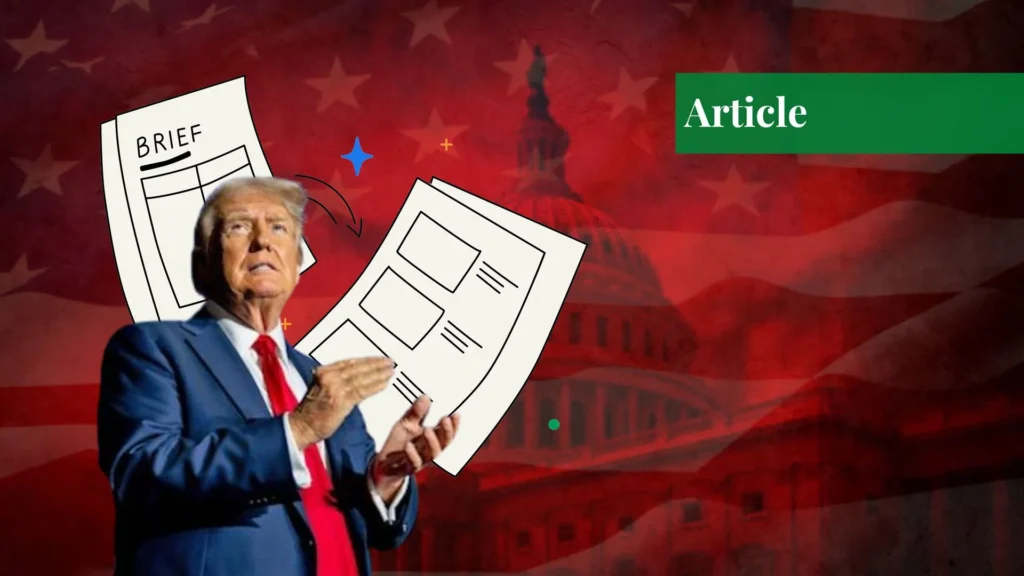Trump Tariff War: Key Announcements and Events Timeline (2025)

In 2025, President Donald Trump continues to wield Trump Tariff War as a primary tool in his trade policy, aiming to reshape global economic relationships.
His approach to trade wars remains aggressive, as he seeks to address what he sees as unfair trade practices by both traditional allies and rival nations.
His strategy is centered around using tariffs to protect U.S. manufacturing, boost the domestic economy, and extract favorable terms from international trade partners.
Table of Contents
Understanding Trump’s Tariff War

Trump Tariff War which began in 2018 was initially aimed at China the U.S.’s largest trading partner. By imposing tariffs on billions of dollars worth of Chinese goods.
Trump sought to bring China to the negotiating table to address issues such as intellectual property theft, forced technology transfers, and trade imbalances.
Over time however his tariffs expanded to include the European Union, Canada, and Mexico, marking a significant shift from traditional U.S. foreign trade policy.
Trump’s rationale behind these tariffs is straightforward: protect American jobs and industries by making foreign goods more expensive and therefore less competitive.
By increasing the cost of imports, the administration hoped to encourage Americans to buy domestically produced goods, thereby boosting U.S. manufacturing and reducing the trade deficit.
Here is Table For Easy To Undestand:
| Date | Issuing Country | Target Country | Action & Impact |
|---|---|---|---|
| 20 Jan | United States | World | Announced America First trade policy, outlining key priorities. |
| 01 Feb | Canada | United States | Imposed tariffs on US food, appliances, vehicles, and more in response to US actions. |
| 01 Feb | United States | Canada, Mexico, China | Announced 25% tariffs on Canada and Mexico; 10% on China. |
| 03 Feb | Mexico | United States | Reached a temporary deal to pause US tariffs for one month. |
| 03 Feb | Canada | United States | Negotiated a one-month pause on US tariffs. |
| 04 Feb | China | United States | Retaliated with 10-15% tariffs on US agricultural products. |
| 04 Feb | United States | China | Officially imposed the 10% tariff announced on 1 February. |
| 05 Feb | United States | China | Adjusted tariffs to restore duty-free treatment for low-value imports. |
| 10 Feb | United States | World | Announced a 25% import tariff on steel and aluminum. |
| 13 Feb | United States | World | Released a memo to counter unfair trade practices. |
| 21 Feb | United States | World | Outlined a plan for handling foreign investments in the US. |
| 21 Feb | United States | World | Raised concerns over foreign digital taxes impacting US tech firms. |
| 25 Feb | United States | World | Requested an investigation into copper imports and national security risks. |
| 01 Mar | United States | World | Launched an investigation into timber imports over security concerns. |
| 04 Mar | Canada | United States | Announced 25% tariffs on C$155bn of US goods, some effective immediately. |
| 04 Mar | China | United States | Increased tariffs on US farm exports and launched investigations into US firms. |
| 04 Mar | United States | Canada | Imposed 10% tariffs on oil and energy imports; 25% on other goods. |
| 04 Mar | United States | Mexico | Enforced 25% tariffs on all imports from Mexico. |
| 04 Mar | United States | China | Increased tariffs on all Chinese imports from 10% to 20%. |
| 06 Mar | United States | Canada | Exempted Canadian imports that meet USMCA rules; lowered potash tariffs. |
| 06 Mar | United States | Mexico | Granted similar exemptions and tariff reductions as Canada. |
| 12 Mar | European Union | United States | Announced retaliatory tariffs to rebalance US trade restrictions. |
| 12 Mar | United States | World | Officially enacted tariffs on steel and aluminum imports. |
| 20 Mar | United States | World | Issued an executive order to boost domestic mineral production. |
| 25 Mar | United States | World | Introduced secondary tariffs (25%) on third countries importing Venezuelan oil. |
| 26 Mar | United States | World | Announced a 25% tariff on automobiles and parts, effective 3 April. |
The Beginning of the Trade War (2018)
Trump Tariff War began in 2018, when he imposed tariffs on China, claiming that the country’s trade practices were unfair and detrimental to the U.S. economy.
Initially, the trade war was focused on Chinese imports, with tariffs targeting goods like electronics, steel, and aluminum.
These measures were designed to reduce the U.S. trade deficit with China and promote domestic manufacturing.
However the move also triggered retaliation from China, which imposed tariffs on U.S. products, creating a ripple effect across global markets.
Escalation and Retaliation (2019-2020)
Between 2019 and 2020 Trump Tariff War intensified. The U.S. expanded tariffs to include other countries, such as the European Union and Canada, citing unfair trade practices.
Countries targeted by these tariffs retaliated with their own measures, further escalating the conflict. Economists warned that such retaliatory actions were straining global supply chains leading to higher consumer prices and decreased market confidence.
Trump’s government also attempted to negotiate with countries to secure trade agreements, but the tariffs continued to remain in place as a bargaining chip.
Meanwhile, the global economy began to feel the strain, with growth slowing and inflation rising in many regions, including the U.S.
Trade Negotiations and Partial Agreements
By 2020, with the economic toll mounting and the COVID-19 pandemic exacerbating global challenges, Trump and Chinese officials reached a phase one trade deal.
Under the agreement, China committed to purchasing more U.S. goods and making structural reforms in areas like intellectual property. While the deal provided temporary relief, the underlying issues between the two countries remained unresolved.
Trump’s administration also reached trade deals with Canada and Mexico, renegotiating NAFTA and replacing it with the USMCA which aimed to modernize trade terms between the three countries and address issues such as labor rights and environmental standards.
Key Policy Shifts and Post-Presidency Effects (2025)

After his second term as president ended, Trump’s Tariff War continued to reverberate through the global economy.
In 2025, as the current U.S. president, Trump Tariff War are still influencing trade dynamics. The legacy of his tariff wars is evident in the shifting trade relationships and the ongoing tension between the U.S. and countries like China, the EU and other trading partners.
Tariffs have become an entrenched part of U.S. trade policy, influencing everything from consumer prices to global trade agreements.
Conclusion
Trump Tariff War has dramatically reshaped U.S. trade relations and continues to be a central theme of his presidency in 2025.
While the ultimate economic outcomes remain uncertain, it is clear that Trump’s approach to tariffs has irrevocably altered global trade dynamics.
As the U.S. navigates these turbulent waters, the long-term effects on both domestic industries and international relations will become clearer.






